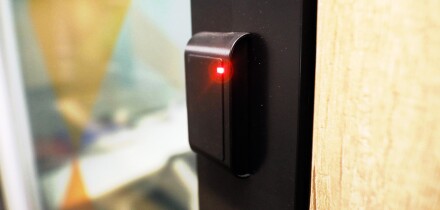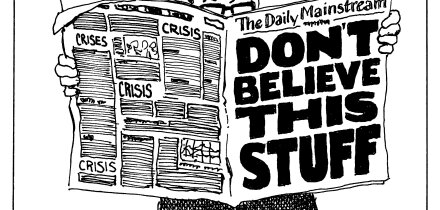The Black-Scholes model is well known to suffer from various imperfections. The model ignores, for example, the volatility smile, thus giving serious headaches to exotic traders who try to quantify the so-called smile effect. The smile problem has generated a number of papers over the past few years where various local volatility models have been proposed, ranging from stochastic volatility models to diffusion models. The initial issue of how to quantify the smile effect seems now to have shifted to the issue of choosing a local volatility model that is as realistic as possible. Local volatility models have many pitfalls. The first is that local volatility is not traded. Making assumptions on the local volatility that will allow the calibration of today's smile and give realistic future smiles is thus difficult. For example, the Dupire-Derman-Rubinstein construction, where the local volatility is a function of time and spot, provides a useful calibration tool, but the shape of the future smile is spot dependent. This can be problematic when one is delta hedging.
STICKY-DELTA MODEL
In this note, we introduce a model that is not based on local volatility, but rather on implied volatility. The sticky-delta model is defined by a single assumption on implied volatility. We assume that for a given delta or percentage in-the-money, and a given maturity, the implied volatility changes with time in a deterministic fashion.
If we were also to impose the independence of implied volatility and delta, then we would obtain the Black-Scholes model. We note that the shapes of future smiles are not spot dependent, and that the kurtosis or convexity of the smile is preserved or at least changes in a deterministic fashion (see Figure 1).
The sticky-delta model is a deterministic smile model in the same sense that discount curves are deterministic interest rate models. It is possible to make a sticky-delta model stochastic by adapting the HJM theory.
FUTURE SMILE
We consider an option market where options for all strikes and maturities are traded. We denote by S the price of the underlying of these options and we ignore interest rates and dividends for simplification.
The implied volatility at time t of an option with maturity T and percentage in-the-money I = S/K is denoted *t (T, I). This volatility process is assumed deterministic in the sticky delta model. The value of a call option with maturity T and strike K, is given at time t by
where CBS is the usual Black-Scholes function and c (t, T, I) is a deterministic function of time, maturity and percentage in-the-money.
Since the gamma of a call is zero at zero and infinity, and the delta of a call is zero at zero, we have
In the sticky-delta model, *t(T, I) is assumed to be a deterministic function of time t. The equation above therefore has the following financial interpretation. Under the sticky-delta assumption, a call option with maturity T and strike K can be replicated using a continuum of calls with maturity t. The notionals of the calls are chosen so to generate at time t enough cash to purchase one call with maturity T and strike K in all cases. The value of the portfolio of calls purchased initially must therefore equal the initial value of the call with maturity T and strike K:
This integral equation relates today's smile surface and the smile surface at a future date t. We can solve this equation to imply the future smile *t (T,I) that prevails at t. The initial smile surface must however satisfy a technical condition for a solution to exist. This condition is much like the Black-Scholes requirement imposing positive forward variances.
RISK NEUTRAL DISTRIBUTION
Using the implied volatility surface *t (T, I) prevailing at time t we calculate the risk-neutral distribution of ST/St at time t:
Under the sticky-delta assumption, the conditional risk-neutral distribution of ST/St is thus a deterministic function of time. It follows that for any real * we have:
We deduce that the process 1nSt has independent increments, as in the Black-Scholes model. In the sticky-delta model, the logarithm of the spot is a Levy process under the risk neutral measure.
Using the above equation, we can calculate the Fourier transform of the increment 1nST - 1nSt from today's smile surface. Taking the inverse of this Fourier transform, we obtain the distribution of ST/St and thus the future smile *t(T,I). This inverse Fourier transform will however not always exist as a distribution.
Hence, a necessary and sufficient condition to be able to calibrate the sticky-delta is for the inverse Fourier transform of E[exp(i* 1n ST)]/E[exp(i* 1n St)] to be a probability distribution. In the case of flat smiles, it is easy to see that this condition is equivalent to requiring the forward variance to be positive.
We conclude by noting that in the sticky-delta model, all exotic options can be replicated by rolling calls and puts as in the case of the long-dated call having maturity T and strike K
This week's Learning Curve was written by Philippe Balland, fixed income division, Merrill Lynch, London, and Lane Hughston, finance department, University of Texasat Austin, and Mathematics Department, King's CollegeLondon.





